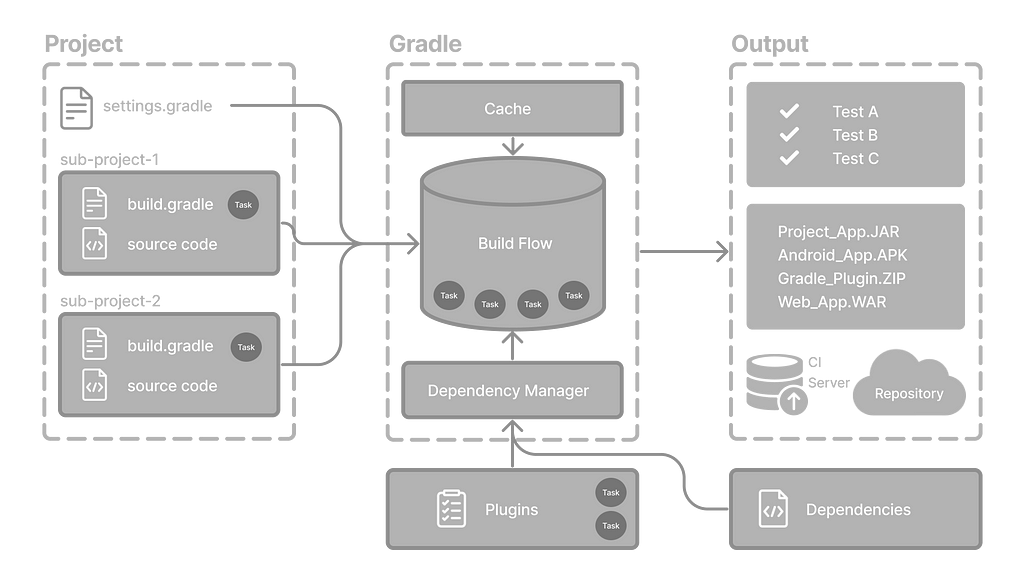Understanding Gradle — Building the Java application in efficient way
I know most of the people from Java background heard and are very well versed with Gradle. But how much do you understand what the Gradle does?

Believe me, if you learn how Gradle does build and deploy, we can resolve most of our build errors very quickly in no time instead of searching over the stack overflow. Let’s dig deeper together.
Let us understand the architecture first.
Gradle Architecture — The arrangement to handle single and multiple projects
Gradle Build Life Cycle
Gradle runs these phases in order:
Phase 1. Initialization
- Detects the settings.gradle(.kts) file.
- Creates a Settings instance.
- Evaluates the settings file to determine which projects (and included builds) make up the build.
- Creates a Project instance for every project.
Phase 2. Configuration
- Evaluates the build scripts, build.gradle(.kts), of every project participating in the build.
- Creates a task graph for requested tasks.
Phase 3. Execution
- Schedules and executes the selected tasks.
- Dependencies between tasks determine execution order.
- Execution of tasks can occur in parallel.
The settings file is the entry point of every Gradle build.
